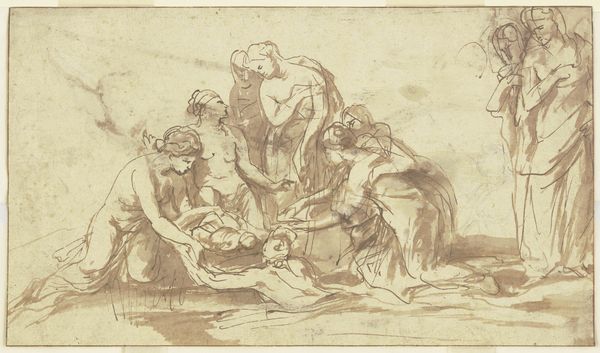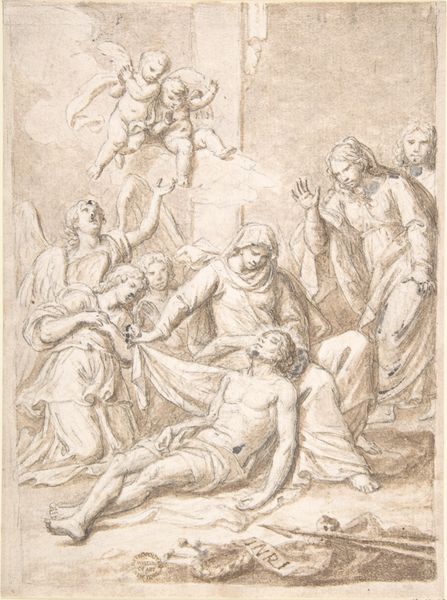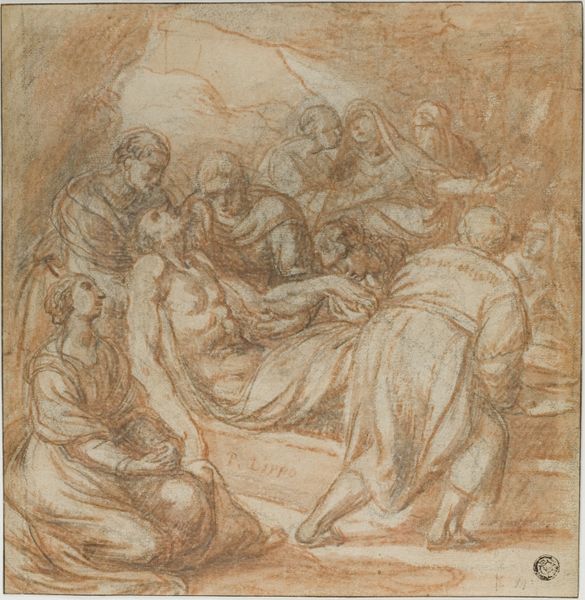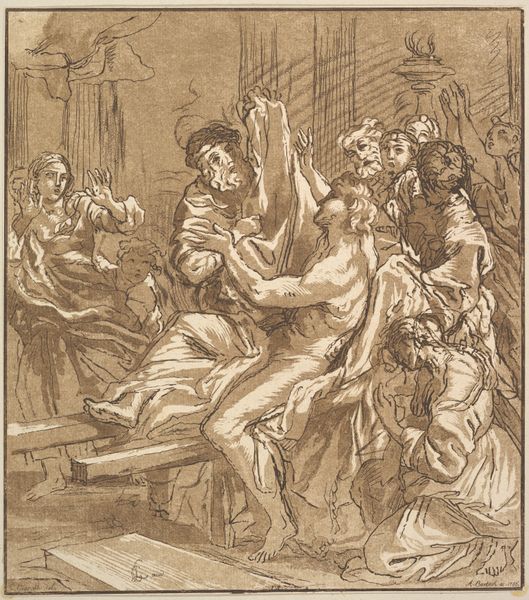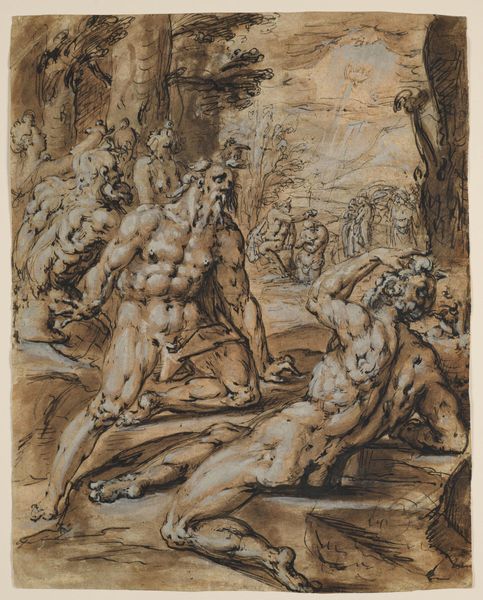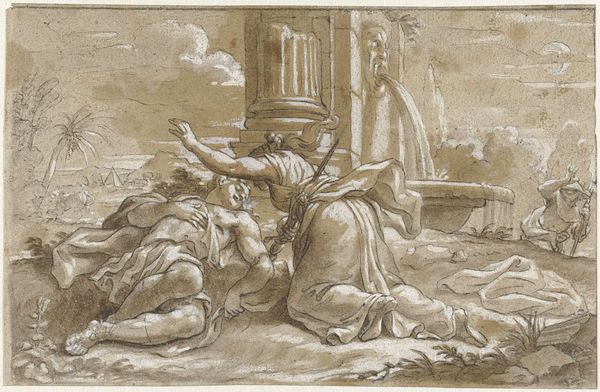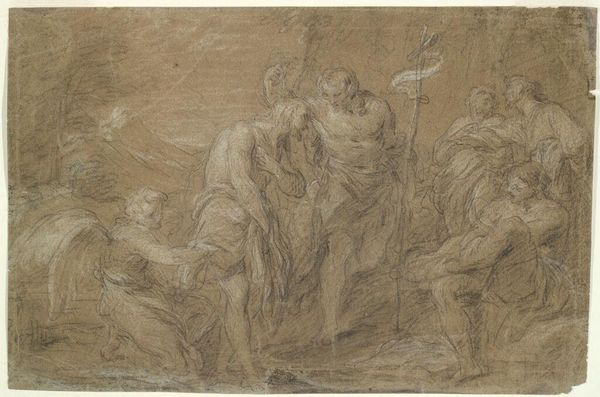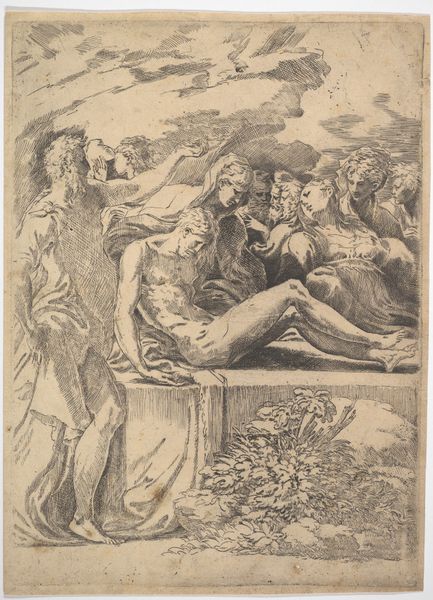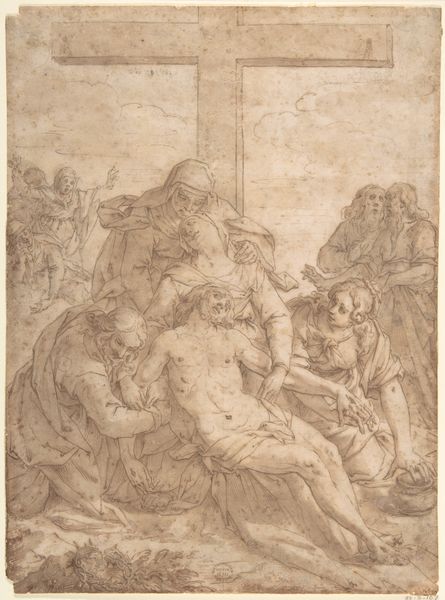
drawing, pencil, charcoal
#
drawing
#
narrative-art
#
pencil sketch
#
charcoal drawing
#
figuration
#
11_renaissance
#
pencil drawing
#
pencil
#
charcoal
#
history-painting
Dimensions: height 223 mm, width 193 mm
Copyright: Rijks Museum: Open Domain
Editor: This is "Graflegging," or "The Entombment," a drawing made with pencil and charcoal between 1577 and 1587 by Dirck Barendsz. It feels heavy, burdened with grief. What can you tell me about the materials and their role in creating such a somber atmosphere? Curator: The choice of pencil and charcoal is crucial here. They were readily available and relatively inexpensive, which positions this drawing as perhaps a preparatory sketch rather than a finished artwork intended for high-status consumption. Notice how Barendsz uses the charcoal to create deep shadows, emphasizing the weight of Christ's body and the emotional burden of the figures surrounding him. The materiality directly informs our understanding of the production. Editor: So, the very act of creating this image, the materials themselves, reflect the subject’s gravity and perhaps humility? Was this common for depictions of religious scenes at the time? Curator: Exactly! Furthermore, think about where Barendsz might have sourced his materials. The social context of the pencil and charcoal industries, the labor involved in their production, is rarely considered but fundamental. Religious art, even depictions of Christ, were becoming increasingly connected to a market economy. Do you think the accessibility of these materials influenced who could create or consume images like this? Editor: That's a great point! I hadn’t considered that access to materials played a role in democratization, of art, or, at least, in visualising and capturing significant subjects. This drawing is both a testament to religious sentiment and perhaps, quietly, to a shifting art market. Curator: Precisely. This piece encourages us to look beyond just the iconography and towards the material conditions of its making and circulation. It helps us challenge the traditional boundaries separating craft and high art. It really speaks to art as a human process. Editor: I'm starting to see this not just as a scene of mourning but also as a reflection on the labor, resources, and access that underpinned its creation. Thanks for offering such an insightful way of considering it.
Comments
No comments
Be the first to comment and join the conversation on the ultimate creative platform.
